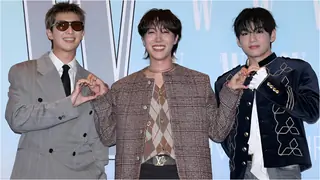Light/dark relationships
Every element in an image has a specific brightness. One area will be seen as bright, another will be perceived as dark. The visual 'weight' of different brightness levels will depend upon proximity, area and contrast. The eye is naturally attracted to the highlight areas in a frame, but the contrast and impact of an object's brightness in the frame will depend on the adjacent brightness levels. A shot of a polar bear against snow will require different compositional treatment than a polar bear in a zoo enclosure. A small bright object against a dark background will have as much visual weight in attracting the eye as a large bright object against a bright background. [Consider portraits of great masters.] The difference in the brightness levels within a frame plays an important role in balancing the composition.
For John Alton, the definitive Hollywood cameraman of the 'film noir' genre, black was the most important element in the shot. The most important lamps for him were the ones he did not turn on. The high key/low key mood of the frame will dictate the styles of composition as well as the atmosphere. A few strong light/dark contrasts can provide very effective visual designs.
Strong contrast creates a solid separation and good figure/ground definition. When size is equal, the light/dark relationship plays an essential part in deciphering which is figure and which is ground. Equal areas of light and dark can be perceived as either figure or ground. The boundary area of a shape often relies on a light/dark relationship. A figure can be separated from its background by backlighting its edges. [A backlight on my head will improve the definition of figure/ground and also create definition of the space.] A highlight in the frame will attract the eye and if it is not compositionally connected to the main subject of interest, it will compete and divert the attention of the viewer.
Harmony and contrast
Although, perception seeks visual unity/harmony, a detailed visual communication requires contrast to articulate its meaning. Morse code can be understood if the distinction between dot and dash is accentuated. A visual image requires the same accentuation of contrast in order to achieve coherent meaning. Light, by supplying contrast of tones, can remove visual ambiguity in a muddle of competing subjects, but a wrong tonal contrast can produce a confused and misleading 'message' - the dots and dashes come close to the same duration and are misread.
Communication
Communication is achieved by contrast. The communication carrier - sound or light provides a message by modulation. There is a need for polarities whether loud or soft, dark or light, dot or dash. [Or in this digital age presence or absence.] Meaning is made clear by comparison.
Light is the perfect medium for modulating contrast. It illuminates the subject and therefore the carrier of the message. Lighting technique, as applied in cinema, balances out and reduces the contrast ratio to fit the inherent limitations of the medium. It therefore contributes in the drive towards perceptual equilibrium by catering simplified images. But light is also needed to provide modelling, contrast and tonal differences. In this sense it introduces diversity and contrast while identifying meaning.
To many, it is also the very fundamental principle of existence. In the Chinese Taoist philosophy, it is described as the:
Yin and Yang
Yin n. [Dark] The feminine, negative, dark principle in nature, which interacts with its complement and opposite, yang.
Yang n. [Bright] The masculine, positive, bright principle in nature, which interacts with its complement, yin.
Now let us see the opening sequences of Andrei Tarkovsky's great film "STALKER". [Screening of Stalker for opening ten minutes.]
One thing I want to tell you is about the use of 'islands' of darkness and brightness, each used to emphasis the opposite. We see it used a lot in Murthy Sir's work, like in 'Kaagaz Ke Phool', 'Pyassa', 'Sahib Bibi or Gulam' etc. In one of Vivanji's paintings this technique was used to emphasis the ethereal morning light on the face of a young girl, with the island of dark clouds behind her face.]
[Let me also talk about a few things, which I left out or not remembered earlier. One of the contrastiest tonal occurrences is in our on eyes. It makes it best suited for easy communication and makes the eye most powerful. In India we even make it more evocative by applying kajol to the eyes. It is no wonder that the only one advice, which Wajda gives to cinematographers, is: "Don't forget to light the eyes of your actors and actresses." Another concept is about islands of darkness and brightness used within a frame to enhance the opposite. Few other things I would have liked to talk here were:
a: Fade In and Fade Out used as the passage of time
b: use of shadows on the faces in a night scene and day scene
c: light used as to create hidden, dark spaces as in thrillers
d: use of backlight as an 'invisible light'



















